The Color Spectrum Eye Test: Understanding Visual Perception


Intro
Color vision is an essential aspect of human perception. It affects how we interact with our environment and makes a significant impact on various fields, from art to science. The color spectrum eye test serves as a foundational tool for diagnosing color vision capabilities. This test does not just aid in identifying deficiencies but also provides insight into how our eyes and brain interpret colors. In this article, we will explore the complexities of visual perception, the methodologies employed in color vision testing, and the relevance of this knowledge in both clinical and everyday settings.
Understanding the intricacies of color vision is crucial. Different individuals perceive colors variably, influenced by both physiological and psychological factors. Various color deficiencies exist, and these can have a direct impact on daily activities. For instance, professions that require precise color discrimination, such as graphic design or electrical wiring, depend heavily on intact color vision.
By investigating the methodologies of color vision tests, we can also appreciate the recent advancements in technology that have heightened the accuracy and efficiency of these assessments. As this article unfolds, it not only aims to provide a comprehensive guide to the color spectrum eye test but also to illuminate the broader implications of understanding color perception in our lives.
Prelims to Color Vision
The study of color vision is essential for understanding how we perceive the world. Color plays a crucial role in our daily experiences, influencing emotions, dictating decisions, and affecting social interactions. This section aims to outline the foundational elements of color vision, including its definition and significance.
Definition of Color Vision
Color vision is the ability to discern colors, a phenomenon that occurs when light interacts with the cones in the retina of the eye. Humans typically have three types of cones, each responsive to different wavelengths of light. These cones enable us to differentiate among the variety of possible colors perceived within visible light. Color vision enables individuals the capacity to interpret environmental cues, recognize objects, and navigate through complex spaces.
Importance in Daily Life
The relevance of color vision extends beyond aesthetics or mere enjoyment; it includes practical implications in various areas of life. Here are a few key points illustrating its importance:
- Communication: Colors convey emotions and messages in ways that words sometimes cannot. In advertising and branding, the choice of color influences consumer behavior, shaping perceptions and decisions.
- Safety: In traffic signals and signage, color plays an integral role in conveying information quickly and effectively. This is particularly critical in emergency situations, where immediate recognition can prevent accidents or injuries.
- Art and Design: The ability to distinguish color enhances creativity and expression in fields such as art, fashion, and interior design. Artists and designers utilize color theory to evoke specific feelings or to create visual harmony.
- Education: Color recognition is often fundamental in educational settings, particularly for young learners. It helps in developing cognitive skills and enhances memory retention through visual associations.
In summary, color vision is not merely a visual experience but a complex interplay of biological, psychological, and social factors. Understanding its intricacies contributes to improved diagnostics and appreciation for the human experience.
Basics of the Color Spectrum
The color spectrum is a fundamental aspect of visual perception, crucial for understanding how we perceive the world around us. Knowledge of the color spectrum helps in various applications such as art, design, psychology, and diagnostics. This section delves into the concepts of light and color and the wavelengths that influence human perception. By grasping these basic principles, one can better appreciate the complexities involved in color vision and the evaluation methods used to assess color deficiencies.
Understanding Light and Color
Light is an electromagnetic wave and is essential for the perception of color. When light strikes an object, it interacts with its surface, leading to the absorption and reflection of specific wavelengths. The reflected light reaches our eyes, resulting in color perception. Different wavelengths correspond to different colors. For instance, short wavelengths correspond to blue, while long wavelengths indicate red. Human vision is reliant on the detection of these wavelengths by specialized cells in the eye.
The importance of light in color perception cannot be overstated. Without light, color would not exist as we know it. Moreover, variations in light conditions—like natural sunlight versus artificial lighting—can affect how colors appear to the observer. This variability is vital for art and design, impacting texture, mood, and interpretation.
Wavelengths and Human Perception
Wavelength, measured in nanometers, plays a critical role in how humans perceive color. The visible spectrum for humans ranges from approximately 380 nm to 750 nm, with each color occupying a different segment of this range:
- Violet: 380 - 450 nm
- Blue: 450 - 495 nm
- Green: 495 - 570 nm
- Yellow: 570 - 590 nm
- Orange: 590 - 620 nm
- Red: 620 - 750 nm
Each individual perceives these wavelengths differently based on the sensitivity of their cone cells, which are responsible for color discrimination. This sensitivity is not uniform for everyone, leading to a variety of experience regarding color and brightness across individuals.
Color blindness and other deficiencies often stem from differences in these cone cells or how they process light.
Understanding these wavelengths is vital, particularly in color diagnostics, as different tests target specific abilities to perceive certain segments of the color spectrum. For example, the Ishihara test is designed to identify red-green color deficiencies, focusing on the wavelengths pertaining to these colors.
Through deepening our insight into the basics of the color spectrum, we set the groundwork for exploring the more intricate details of color perception, visual diagnostics, and their implications in various fields. Understanding how light and wavelengths interact with human sight enhances our overall comprehension of color vision and its significance.
Physiology of Color Perception
Understanding the physiology of color perception is essential in the context of assessing and diagnosing visual capabilities. This section delves into the mechanisms contained within our eyes and how these contribute to our ability to perceive color. An awareness of these physiological aspects aids in grasping the complexities of color vision tests, enabling better assessment of color deficiencies.
Structure of the Eye
The human eye is a sophisticated organ. It functions like a camera, capturing light and enabling us to see. The structure of the eye plays a crucial role in color perception. Key components include the cornea, lens, retina, and optic nerve.
- Cornea: The outermost layer that refracts light.
- Lens: It focuses light onto the retina.
- Retina: Contains photoreceptor cells and is vital for translating light into signals that the brain can interpret.
- Optic Nerve: Carries visual information from the retina to the brain.
At the back of the eye, the retina has two types of photoreceptor cells: rods and cones. While rods are responsible for vision in low light conditions, cones are essential for color vision. The proper functioning of these components is vital for accurate color perception.
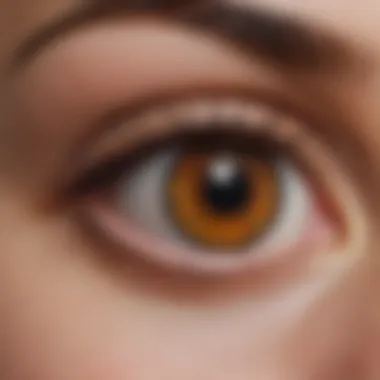

Role of Cone Cells
Cone cells are pivotal in the way humans perceive colors. There are three types of cone cells, each sensitive to different wavelengths of light.
- L-cones: Sensitive to long wavelengths, primarily detecting red hues.
- M-cones: Sensitive to medium wavelengths, primarily associated with green hues.
- S-cones: Sensitive to short wavelengths, connected with blue hues.
These cones work together, allowing the brain to interpret a spectrum of colors based on the varying wavelengths. Without the proper action of cone cells, visual interpretation can be impaired, leading to conditions such as color blindness.
Understanding the physiological pathways of color perception not only enhances comprehension of how we see the world but also assists in developing effective color vision tests, ultimately contributing to better diagnostics and interventions.
"The precise alignment of anatomical structures within the eye ensures accurate color perception and contributes to our understanding of visual acuity."
Types of Color Blindness
Understanding the various types of color blindness is critical for both medical professionals and individuals affected by these conditions. Color blindness influences how people perceive and interact with their environment. Its recognition is pivotal in ensuring that affected individuals receive adequate support, thus minimizing challenges in daily activities. Moreover, insight into these types can improve educational and occupational outcomes for those impacted.
Protanopia and Protanomaly
Protanopia and protanomaly are two forms of color blindness that primarily affect red perception.
Protanopia is a complete inability to perceive red light due to a lack of red cone cells in the eyes. A person with protanopia will often confuse reds with darker shades of other colors, especially greens and browns. This condition affects approximately 1% of males and is considerably rare in females.
On the other hand, protanomaly describes a more subtle variation, where there is a reduced sensitivity to red light. Individuals having this type can still perceive red but may see it as more muted. This can lead to challenges identifying darker reds against greens or browns, making activities like driving or selecting clothing problematic. It is less common than protanopia, estimated to affect about 1% of men and even fewer women. Recognizing these types of color blindness is essential for tailored accommodations in education and workplace settings.
Deuteranopia and Deuteranomaly
Deuteranopia and deuteranomaly pertain to the green light spectrum and are the most prevalent forms of color blindness.
Deuteranopia affects around 1% of males and less than 0.01% of females. Individuals with deuteranopia cannot perceive green light due to a deficiency in green cone cells. They often struggle to distinguish between reds, greens, and browns, leading to misinterpretation in scenarios where color differentiation is crucial.
In contrast, deuteranomaly is a milder condition that results in reduced sensitivity to green light. Individuals with this type see greens as diminished, but unlike deuteranopia, they retain the ability to perceive these colors accurately to some extent. This disorder is more widespread, affecting about 6% of males and under 1% of females. Understanding these two conditions can significantly impact how educational materials are presented and how workplaces develop visual tasks.
Tritanopia and Tritanomaly
Tritanopia and tritanomaly are less common but equally significant types of color blindness that involve blue and yellow perception.
Tritanopia is characterized by a complete inability to see blue light, causing individuals to confuse blues with greens. This form of color blindness is extremely rare, affecting approximately 0.5% of males and even fewer females. Such difficulties can affect daily activities from choosing clothing to navigating environments where color-coding is essential.
Conversely, tritanomaly refers to a reduced sensitivity to blue light, which causes a shift in blue color perception. Individuals might still recognize blue colors but will see them differently, potentially merging them with greens or purples. Estimated to affect less than 1% of the population, this particular condition requires awareness in industries where precise color differentiation is crucial, such as design or art.
In summary, knowing the specific types of color blindness enhances understanding and fosters inclusivity for affected individuals. Each type presents unique challenges, which can be addressed through simple adjustments and awareness.
The Color Spectrum Eye Test Explained
Understanding the various eye tests that evaluate color vision is crucial for recognizing how the human eye perceives colors. The assessments not only help individuals determine their color vision capabilities, but also aid healthcare professionals in diagnosing potential deficiencies. By comprehending the methodologies behind these tests, one can better appreciate the subtle nuances of color perception and its impact on daily life.
Overview of Testing Methods
Several distinct methods are used to test color vision. Each method serves a specific purpose and provides insight into a person's ability to perceive different wavelengths of light. The main testing methods include:
- Ishihara Test: This is the most widely known color vision test, primarily used in clinical settings.
- Farnsworth-Munsell 100 Hue Test: This test offers a more thorough assessment of an individual's color discrimination abilities.
- Anomaloscope: This device is utilized for a more precise diagnosis of color vision deficiencies.
These tests reveal not only the type of deficiency, if present, but also help in understanding how individuals interact with their environment through color perception.
Ishihara Test
The Ishihara Test consists of a series of plates that contain colored dots arranged in a way to form numbers or shapes. Those with normal color vision can quickly identify the numbers, while individuals with color deficiencies may not perceive them correctly. The test primarily assesses red-green color deficiencies, which are the most common type.
- Advantages: The Ishihara Test is straightforward, quick, and can be administered by various health professionals without requiring extensive training.
- Limitations: While effective for red-green deficiencies, it does not assess blue-yellow defects or other types of color vision issues.
Farnsworth-Munsell Hue Test
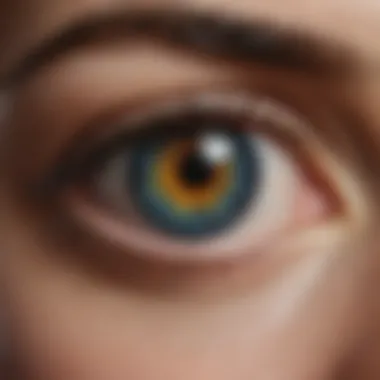
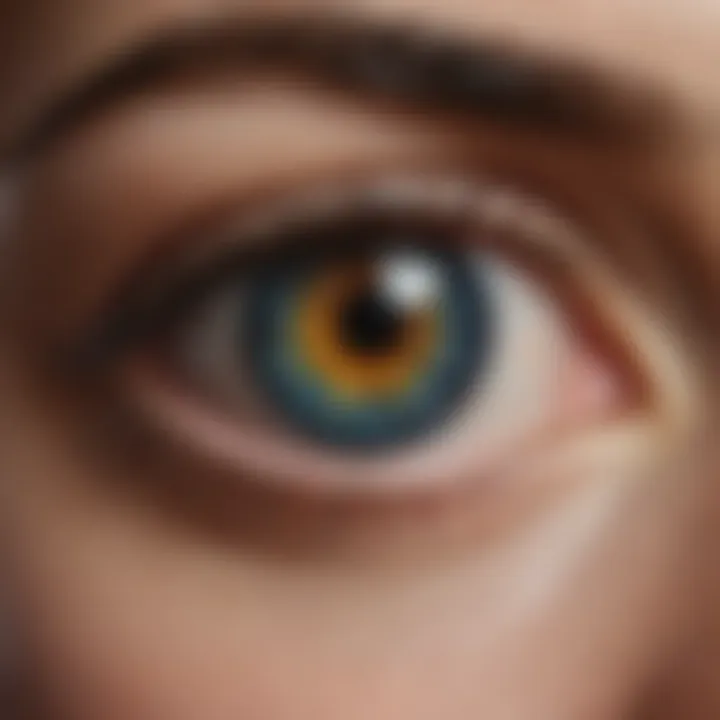
The Farnsworth-Munsell 100 Hue Test is a more intricate assessment that measures an individual's ability to distinguish between subtle variations in hue. Participants are given a set of colored caps, which they must arrange in a spectrum. The degree to which they can accurately place the caps reflects their color discrimination capabilities.
- Benefits: This test is particularly useful for identifying mild color deficiencies that may not be noticeable in simpler tests.
- Usage: Frequently used in research, occupational health, and clinical settings to provide a detailed understanding of color perception.
Anomaloscope
The anomaloscope is a specialized device designed to diagnose color vision deficiencies quantitatively. It presents the user with a combination of red and green lights and requires them to match the colors. This process allows for a precise measurement of the participant's color perception capabilities.
- Precision: The anomaloscope provides a more accurate diagnosis of color deficiencies, allowing for better differentiation between types.
- Clinical Significance: Often used in professional evaluations, especially in fields where color discrimination is critical, such as aviation, safety, and color-critical industries.
Psychological Aspects of Color Vision
Color vision is not just a physiological phenomenon but also a psychological one. It plays a significant role in how we interpret our environment and our emotions. Understanding psychological aspects of color vision helps us appreciate its broader implications beyond mere identification and differentiation of colors.
One of the primary elements is the relationship between color perception and mood. Colors have the power to evoke emotional responses. For instance, warm colors like red and yellow can create feelings of warmth or excitement, while cooler colors like blue evoke calm or sadness. Research has shown that individuals often connect certain colors with specific feelings. This connection could be due to cultural factors, personal experiences, or environmental cues.
Color Perception and Mood
Colors can significantly influence our feelings and behaviors. In various psychological studies, individuals reported changes in their mood when exposed to different color palettes. For example, exposure to red can elevate heart rates and create a sense of urgency, while blue can promote tranquility and relaxation.
Some practical applications of this psychological insight include:
- Interior Design: Choosing colors for rooms to enhance desired moods. For example, a spa might use soft blues and greens to create a calming atmosphere.
- Marketing: Brands utilize color psychology to influence consumer behavior, relating specific colors to their brand identities. For instance, fast-food chains often use red and yellow to stimulate appetite and encourage quick decisions.
- Therapeutic Settings: Colors can be incorporated into healing environments. Research supports the idea that certain colors may reduce anxiety and improve overall well-being.
Understanding how color acts as a psychological stimulus allows for better applications in art, therapy, and design.
"Colors, like features, follow the changes of the emotions." – Pablo Picasso
Cultural Influences on Color Interpretation
Cultural context shapes how individuals interpret and respond to colors. Different cultures assign varying meanings to specific colors, affecting emotions and perceptions. For instance, in many Western cultures, white is often associated with purity and new beginnings, while in several Eastern cultures, it is linked to mourning and loss.
Some examples of cultural interpretations include:
- Red: In some Asian cultures, red symbolizes good fortune and joy, commonly seen in celebrations, unlike in certain Western cultures where it can signify danger or warning.
- Black: Often associated with elegance in fashion, black also represents death and mourning in various societies.
- Green: Generally viewed positively as a symbol of nature and health in many places, it can have different connotations in other contexts, such as envy or inexperience.
Understanding these cultural influences can help in better communication and interaction across multicultural environments, providing insights into human behavior and social norms.
As we continue to explore color vision, the psychological aspects add depth to our understanding of how color shapes experiences and influences behaviors in various contexts.
Impact of Color Deficiencies
Color deficiencies, often referred to as color blindness, have significant implications across various domains. Understanding these effects is essential for grasping how limited color perception influences individual experiences and societal interactions. These deficiencies can impact learning, development, and even professional choices, making it a critical area of discussion.
Effects on Learning and Development
Color vision is vital in educational contexts. Children with color deficiencies may struggle with activities that require color recognition, such as reading color-coded charts or identifying hues in art projects. This can lead to frustration and a lower sense of achievement in early learning stages. Studies suggest that children who cannot differentiate colors may experience delays in developing certain cognitive skills. For example, tasks involving categorization and organization often rely heavily on color distinctions.
Furthermore, a lack of awareness and resources in schools can exacerbate these challenges. Educators may not have sufficient training to accommodate students with color deficiencies, resulting in an educational environment that may inadvertently marginalize these students.
Enhancing understanding of color-related challenges can lead to the development of better teaching methods and materials that account for diverse visual capabilities. Incorporating various teaching aids, like patterns and text labels, can improve engagement and comprehension for students facing these hurdles.
Challenges in Professional Fields
In the workplace, individuals with color deficiencies may face significant challenges, depending on their career paths. Professions like graphic design, engineering, and piloting often require acute color discrimination. For those unable to perceive colors accurately, choosing career paths may become limited.
Moreover, workplaces that do not recognize or accommodate color deficiencies may inadvertently exclude talent. This can happen through assessments that do not consider individuals' unique visual capabilities, resulting in missed opportunities for both the employee and the employer. For instance, those assessing job candidates in the technical fields need to ensure that color vision tests are relevant and justifiable, avoiding unnecessary barriers to entry.
Additionally, simple tasks like interpreting color-coded information can become labor-intensive and stressful for employees with color vision deficiencies. They may need to spend extra time cross-referencing or asking colleagues, which can detract from productivity.
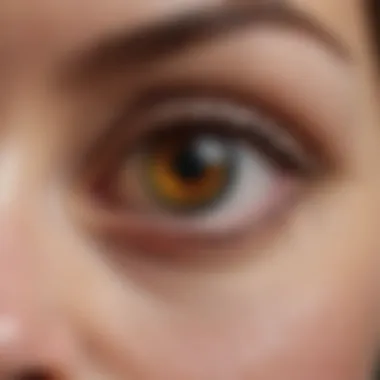
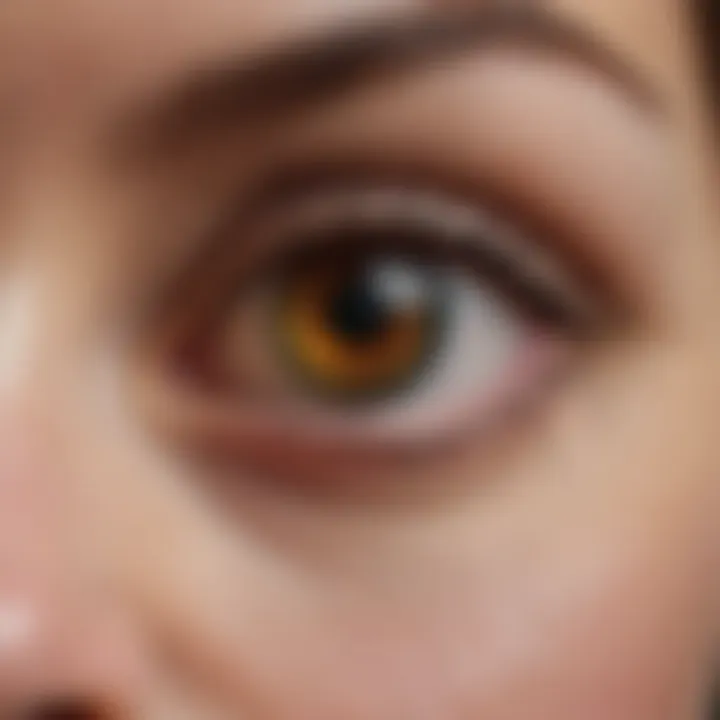
"Employers should strive for inclusivity and awareness of color vision deficiencies to ensure that all capable individuals have equal opportunities to succeed."
Recent Advancements in Color Vision Tests
Recent advancements in color vision tests signify a pivotal evolution in the way visual perception is assessed. Technological innovations have led to more accurate, user-friendly, and efficient methods of evaluating color vision abilities. As understanding of color perception deepens, the synergy with digital tools and wearable technology is increasingly recognized. This section will delve into these modern methodologies, illustrating their crucial role in diagnostics and their broader implications.
Digital and Automated Testing
Digital and automated testing methods have revolutionized the assessment of color vision. Traditional tests, such as the Ishihara plates, rely heavily on printed materials that can introduce variability due to printing quality and lighting conditions. In contrast, digital platforms offer consistent, adjustable environments that increase test reliability.
Automated systems enhance efficiency, enabling simultaneous testing of multiple aspects of color vision. For instance, tests can now adjust difficulty levels based on initial user responses, providing a tailored assessment experience. The data collected through these systems can be analyzed quickly, yielding immediate results for both individuals and practitioners.
Some key benefits of digital testing include:
- Consistency: Reduces variable factors inherent in physical tests.
- Engagement: Interactive elements can maintain the subject’s attention, leading to more reliable outcomes.
- Customization: Tests can be adapted for various populations, including those with known color deficiencies.
As these advances continue, practitioners can expect a paradigm shift in how color vision is diagnosed and monitored over time.
Wearable Technology for Color Vision Assessment
Wearable technology introduces an innovative frontier in assessing color vision. Devices like smart glasses or augmented reality (AR) headsets can actively evaluate a user’s color perception in real-world settings. This offers an immersive experience that simulates everyday visual challenges, providing a practical understanding of how color deficiencies manifest in daily life.
These technologies can deliver real-time feedback. Users can receive immediate suggestions or compensatory strategies to handle color discrimination issues. This has significant implications not only for individuals but also for professions where precise color judgment is essential.
Some notable features of wearable technology include:
- Real-world application: Tests are conducted in environments where color discrimination is vital.
- Data tracking: Continuous monitoring can highlight changes in color vision, enhancing preventive measures.
- Accessibility: Many devices become part of everyday life, reducing the stigma associated with traditional testing methods.
In summary, the integration of digital and wearable technology in color vision tests not only enhances accuracy but also deepens understanding of individual experiences. These advancements are essential as they bridge gaps in scientific knowledge and practical application, solidifying the relevance of color vision assessments in modern life.
End
The conclusion presents essential insight into the significance of color vision tests. Understanding color perception is not only critical in medical contexts but also impacts many facets of daily life. This section will discuss key findings from this article and provide a pathway for future research in the field of color vision diagnostics.
Summary of Key Findings
The exploration of the color spectrum eye test reveals several important points:
- Comprehensive Understanding: The relationship between physiological structure of the eye and the ability to perceive colors is complex. Cone cells and their corresponding wavelengths play a direct role in color vision, with deficiencies leading to various forms of color blindness.
- Implications of Color Deficiency: Color vision deficiencies affect learning, development, and even certain professions. They present obstacles that are not just superficial; a profound impact can arise from small shifts in color perception, influencing day-to-day activities and job performance.
- Advancements in Testing Methods: With technology evolving, digital and automated tests are becoming more commonplace. Devices are now being developed that can assess color vision more accurately and efficiently, allowing for a broader range of people to be tested with ease.
Overall, the findings indicate that color vision plays an integral role in human experience and underscores the need for comprehensive assessment tools in various domains.
Future Directions in Research
The ongoing study of color vision and its related tests continues to be a fruitful area for exploration. Potential future directions for research include:
- Integration of Technology: Investigating further into the applications of wearable technology for color vision assessments could yield innovative solutions. Mobile applications and smart glasses might revolutionize how tests are administered and interpreted.
- Broader Population Studies: More extensive and diverse studies about color blindness can lead to a better understanding of its effects across different demographics and environments.
- Psychological Aspects: Exploring how color perception affects cognitive functions and emotional health could be beneficial. Understanding these connections can lead to enhanced educational strategies and therapeutic approaches.
Importance of References
References serve multiple purposes in any scholarly discussion. They enable verification of facts and foster trust in the presented material. In this article, references validate the methodologies used in various color vision tests such as the Ishihara Test or the Farnsworth-Munsell 100 Hue Test. By connecting to established studies or authoritative sources like Britannica and Wikipedia, the audience can explore different aspects of color perception more deeply.
Specific Elements Highlighted in References
- Historical Context: Many references provide a backdrop of how color vision science has evolved over the years, allowing readers to appreciate advances in diagnostic techniques.
- Technical Details: Important details about the physiological underpinnings of color vision arise through cited works that dissect the structure of the eye and the role of cone cells.
- Statistical Data: Some references feature relevant statistics pertaining to color deficiencies in various populations, offering a clearer picture of this issue globally.
Benefits of Including References
- Enhancing Credibility: Citing reputable sources reinforces the reliability of the article, making readers more likely to trust the presented insights.
- Expanding Knowledge: References allow readers to extend their knowledge further. They can delve into underlying concepts that aren't fully covered within the article's confines.
- Encouraging Research Engagement: By providing resources for more detailed exploration, references can inspire students and professionals to conduct their research in this field.
Considerations Around References
When examining the references, it’s important to acknowledge that new findings in color vision may emerge over time. This dynamic nature of research means that keeping abreast of the latest studies is crucial for both the readers and the authors of such articles. Additionally, the quality of sources should always be scrutinized to ensure they meet the academic or professional standards expected in this domain.
"References are not merely annotations; they are pathways to expanded understanding, inviting readers to engage wider, deeper, and more critically with the subject matter."
In summary, the references section is not just an appendage but a critical component of this article. It enriches the reader’s comprehension, promotes further inquiry, and cements the legitimacy of the discussions on color vision and its assessment.







